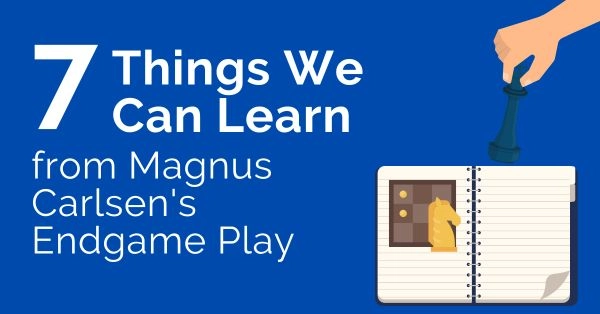
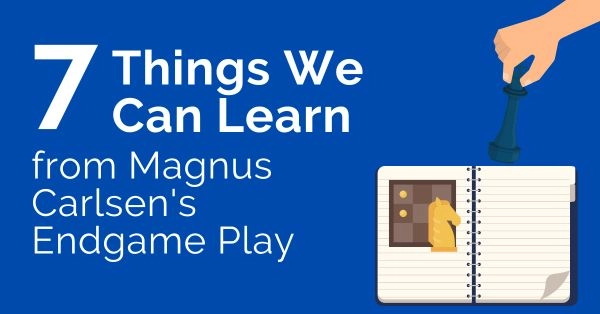
In this article, we will take a look at 7 things we can learn from Magnus Carlsen’s Endgame Play.
Magnus Carlsen is arguably the greatest endgame player of all time. He has developed such an amazing reputation in the endgame that many players hesitate to go into the endgame against him.
Carlsen is famously known to ‘squeeze water from stone’, a style and technique so powerful that he can play on and get the best out of any position. He has produced many endgame masterpieces. Players can learn many things from these instructive endgames.
1. Harmony Among Pieces
A telling trait of the greats of the past is that their pieces were always harmonious. It’s as if magically the pieces just appear in the right positions. Carlsen is no exception, a look at his games shows that he also possesses this amazing skill.
In the following game, we see how Carlsen realizes the full potential of his pieces.
Magnus Carlsen vs Sergey Karjakin
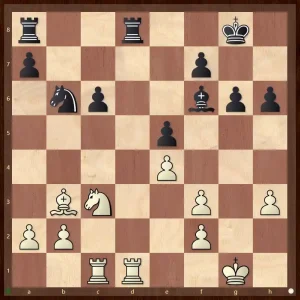
White to play
Both sides have compromised pawn structure but Carlsen thinks he can play for a pleasant position. Can you find a way to harmonize the pieces?
The only piece that looks out of position is the Knight on c3. It lacks forward squares to go to as b5 and d5 are both covered by the pawn on c6. And it also blocks the Rook on c1.
Therefore, Carlsen exchanges a pair of Rooks with Rxd8+
The idea is to vacate the d1 square for the knight which can go to e3 to eye potential weak squares on the Kingside. In the process, he also activates the c1 Rook and can go to c5 to pressure the e5 pawn and further to a5 to attack the a7 weakness.
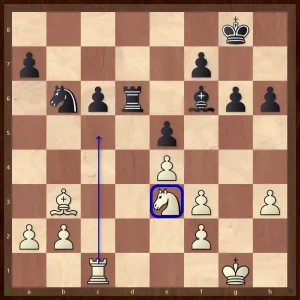
2. Help Your Opponents Make Mistakes
In endgames, strong players will not commit mistakes on their own. Carlsen is known to induce errors from his opponents. The subtlety lies in the ‘paradox of choice’ in endgames. Even though there are only a handful of pieces, the number of options available to each player is immense. Carlsen uses this to great effect and manages to draw out inaccuracies from his opponent.
Of course, an element of luck is always present in such cases. But fortune will be on your side if you have the strength and perseverance to fight like Carlsen.
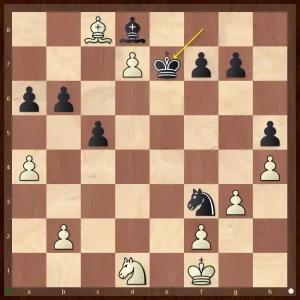
What’s your evaluation of the position?
- White is slightly better
- Equal
- Black is slightly better
Can you devise a plan to give your opponent a chance to go wrong?
This endgame is even. But Carlsen tries to get the nest out of the position. He opts for Ne3. He calmly improves his Knight and makes his opponent decide. Whether to protect the a6 pawn or restrict the Knight with g6. A lesson we can take away is that
Your opponent is likely to make a mistake if you make them make important decisions over and over again.
After Ne3 his opponent went wrong with g6. It was important to protect the a6 pawn. Carlsen went on to win this game.
3. Importance of Spare Tempi
In this game against Hou Yifan played in Tata Steel Masters 2016, Carlsen demonstrates the importance of having spare tempi in King and pawn endgames.
In King and Pawn Endgames, your King can face opposition or blockades on the only entry squares available to your king.
Triangulation is one useful device in such scenarios. If Triangulation doesn’t work then you have to ensure that you have enough spare tempi to make progress.
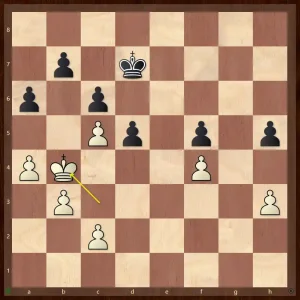
Black to Move
You can try calculating this position till the end as a calculation exercise.
It looks like Black covers the only entry point on the queenside. However, Carlsen breaks through in clinical style. There are multiple instances in the game where Carlsen uses his spare tempo to make progress.
This game shows the importance of pawn moves in the endgame: We should not make any careless pawn moves early in the endgame as they can come in handy in the future.
4.Principle of Two Weaknesses
A useful rule of thumb in the endgame is that you have to induce multiple weaknesses in your opponent’s position to win. It often means you have to play on both sides of the board.
Magnus Carlsen vs Fabiano Caruana, Bilbao 2012
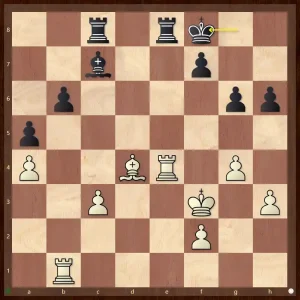
White to play. Evaluate the position and devise a plan for White.
The computer gives the following position as only slightly better for White. However, in practice, it is much easier to play for White. This is because
- Black has a backward pawn on the open b file.
- White’s c-pawn is isolated but it’s safe for the moment and it acts as an anchor for the Bishop.
- White’s king is much more active than its counterpart.
To make progress White has to force another weakness on the Kingside. White plays the move 31.h4
Carlsen aims to make the h6 pawn the secondary weakness after h5.
5. Reposition Your Pieces for Maximum Effect
Magnus Carlsen vs Fabiano Caruana, Bilbao 2012
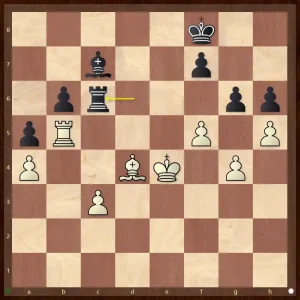
White has all the pieces active. But Black is still holding on. Can you think of a way to expose the weaknesses in Black’s camp?
Carlsen makes an amazing move. 43.Rb1!
White’s idea is to swing the rook over to the h-file and target the h6 pawn after hxg6. If Black tries to stop White’s plan with gxh5 then that opens the g-file and Carlsen will use the g file to further attack Black’s position.
6. Taking Objective Decisions
Carlsen is an objective chess player. We can see this at work when he evaluates positions with pinpoint accuracy. His objectivity and concrete play are one of the pillars of his strong endgame play.
Francisco Vallejo Pons vs Magnus Carlsen
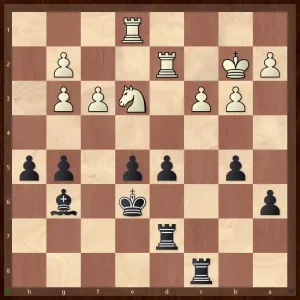
Black to move
What’s your evaluation of the position?
- White is slightly better
- Equal
- Black is better
Can you think of a continuation for Black?
The position is better for Black due to Carlsen’s dominant central pawns. The Black bishop is better than the White knight and the knight is also restricted by the pawns. However, Black’s king is in the line of the White Rook.
But Carlsen played the straightforward move 26..d4!
Carlsen uses his strong calculation and evaluation skills to navigate through the position. He assesses that his King is safe and that d4 is the only way to make progress in the position. The logic is that Black has to strike before White because otherwise White will play f4 and grab the initiative and this can turn out to be dangerous with the King in the center.
7. Playing on
Perhaps the greatest aspect that we can learn from Magnus Carlsen is his fighting spirit. If Carlsen realizes that his position is even slightly better, then he will do his best to squeeze the most out of the game. This personality trait has won him several laurels and makes him the toughest player to beat in a serious game.
Conclusion
Few dispute the dominance of Magnus Carlsen. His unique set of skills and personality traits make him stand head and shoulders above his contemporaries. In this article, we only looked at a few examples of his endgame ability. The more you look at his endgames the more mesmerizing it is. Players of any level will benefit immensely from a thorough study of his Endgame play.
https://thechessworld.com/store/product/magnus-endgame-with-im-marko-nenezic/
Discover more from reviewer4you.com
Subscribe to get the latest posts to your email.





